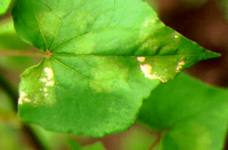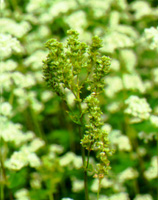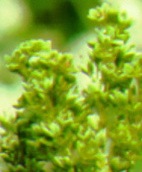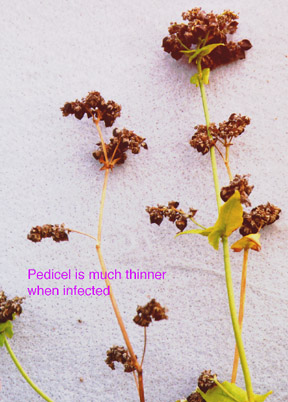Buckwheat Diseases
Powdery mildew
Powdery mildew is a common seed-borne infection that results in light blotches on the leaf. These blotches become more apparent during seed fill and may even result in small necrotic areas. The inoculum resides under the hull of the buckwheat kernels after having grown in the flower of the preceding generation. The fungus grows inside the lead from the beginning, there is no external phase of the infection. Therefore, no treatment is possible. Fortunately, previous experience has shown that there is no effect on yield and that the infection does not get worse. No treatment is needed.

Aster Yellows
Aster yellows is a phytoplasma disease that causes the flowers to be small, green, and sterile. It is commonly seen in buckwheat fields, but only affects a few plants. It is spread by aster leafhoppers. There is no significant effect on yield, nor is there any prevention. Since it serves as a host, buckwheat will not reduce populations of the pathogen when it is used in rotations with crops that are susceptible to aster yellows (lettuce and carrots).


Stem rot
Stem rot (Sclerotinia sclerotiorum) can sweep through a field near harvest. It begins as small brown spots on the stem. The stem then turns pale and dehydrated (left stem in the picture below). Seeds fall off easily and eventually the stem topples. Once toppled, the plants are hard to find. The disease may never be discovered.

